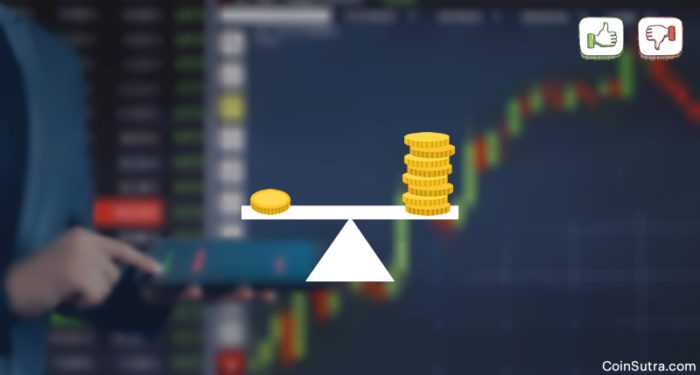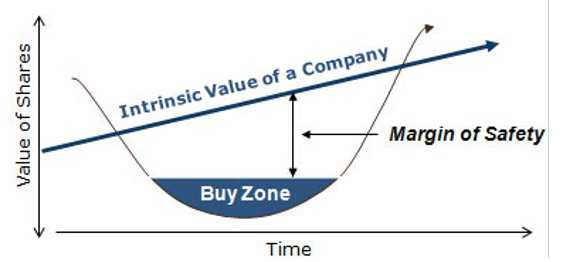
Every second in your account you must have 25% of the total price of the stock you hold to cover the maintenance margin.
By Guy Avtalyon
A margin call is something that every trader would like to avoid.
- Buying on margin means borrowing money from your broker to buy stocks.
- There is no profit without the risk involved.
Have you ever seen a better movie than Margin Call? A movie about the Financial Crisis? It just crossed my mind when I started to write this.
Okay, never mind. The subject of this article is a margin call in the stock market.
Let’s start from the beginning.
What turns around and around the stock market is a risk. I know that is the major problem for most of you. How to take the risk? Because the risk has its bright and dark side and you know that. For example, you are trading some stock without guarantees that it will perform well.
The identical risk that boosts stock prices one day can lower them tomorrow. Yes, the identical. Pretty scary.
But here we come to the bright side of the margin call. For investors who want to profit a lot and quickly nothing is better than buying on margin.
Buying on margin means borrowing money from your broker to buy stocks. Basically, it’s a loan from your broker.
How “buying on margin” works?
You can borrow from your broker up to 50% of the price of a stock.
For example, when the stock price is $20,000 you will pay $10,000 and your broker will lend you the rest which is another $10,000.
Let’s look at the possible scenarios.
Assume the stock price grows at $24,000. The return on your investment will be 40%. You invested $20,000, but you have to give back to your broker $10,000 and you will end with $14,000 in your hands. But you invested yours $10,000 so you will have $4,000 of profit. This is good and you can be happy because you made a profit.
But things may go in another direction.
Assume the stock price went down at $16,000. You will end up with a 40% loss on your investment. Even more, you have to give back the borrowed money to your broker increased by charges, fees, and interest on the loan, of course.
Buying on margin may be extremely risky. You may lose your entire investment. But you may lose more because of something known as a margin call.
Every second you must have an adequate amount in your account to cover the maintenance margin. That amount is 25% of the total price of the stock you hold.
What can happen if you don’t have enough cash in your account? Your broker will issue a margin call. That means, your broker is demanding you to cover the difference with more deposit and reach that 25% maintenance level.
Let’s go back to our example and situation when things went wrong. What will happen if the stock price drop at $12,000? Your loss is $8,000 and now you have only $2,000 in your account. The rule is that you MUST have 25% and $2,000 is not enough to cover that. So, you lost $8,000 and at the same time, you have to deposit an additional $500 in your margin account to stay in the market. Also, you have to pay back the money to your broker.
Is margin call dangerous to investors?
It can be extremely dangerous. In our example the missing deposit is small as the money invested isn’t big, but you can count how it is an enormous loss when the value of the investment is $200,000, $500,000, or million dollars.
The most frightful detail about margin call for you as new investors is that your broker has no obligation by law to warn you that your margin account is too low. So, what the broker will do?
The broker will sell your stock and liquidate your assets if it is necessary. He or she needs to ensure the maintenance level in your margin account. Even more, the broker can begin selling your stock even the margin call is issued. Such will not wait for you and will not give you a grace period. Damn, you are dealing with a un-patient broker. This is an extremely painful and dangerous situation. If you come up to this situation how will you earn your money back when the market turns in your favor. You have nothing to trade with.
The other danger about margin call is that you do not have an influence on which stock your broker may sell. Of course, the broker will choose the best players to cover fast and smooth the maintenance margin.
Moreover, the brokerage may change the rules and issue the margin call based on them. You will not have even zero chances to delay paying the margin call.
How to avoid the potential risk of a margin call
First, stay away if you don’t have enough experience in trading. Second, open some other account for an emergency with enough money to cover the margin call.
I can understand that you are willing to enter the market as a big player. At least to earn a big profit. Nothing is bad with that. Everyone wants the same. Just keep these things on your mind when you want to trade on margin. Buying on margin is an extremely exciting method, risky but with great potential to profit.
If you are 100% sure that you have a great player in your hands, and don’t have enough money to buy it, do it. Borrow from your broker. Sometimes, a great risk will bring a great profit. In the end, there is no profit without the risk involved.




